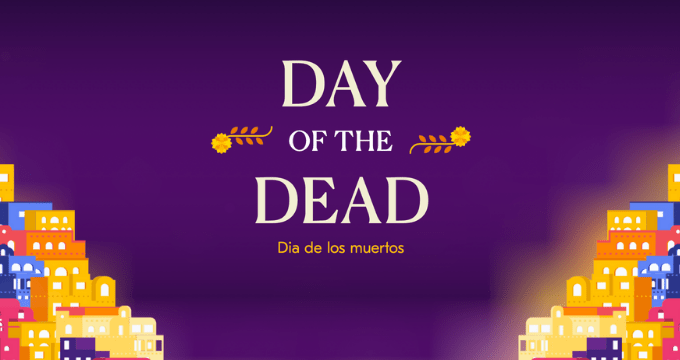Day of the Dead (Día de Los Muertos) is one of the most important holidays in Mexican culture and heritage. Far from being a Halloween celebration, as many may think, this day is one of family, tradition, and celebration of the joy of life! And, while the general “theme” may be related to death, it’s only so much as to show the deep love, care, and respect for family members who have passed.
A Brief History of Day of the Dead
In a well-written segment from National Geographic, they share a brief history and summary of Día de Los Muertos:
Day of the Dead originated several thousand years ago with the Aztec, Toltec, and other Nahua people, who considered mourning the dead disrespectful. For these pre-Hispanic cultures, death was a natural phase in life’s long continuum. The dead were still members of the community, kept alive in memory and spirit—and during Día de los Muertos, they temporarily returned to Earth. Today’s Día de los Muertos celebration is a mash-up of pre-Hispanic religious rites and Christian feasts. It takes place on November 1 and 2—All Saints’ Day and All Souls’ Day on the Catholic calendar—around the time of the fall maize harvest.
For a full two days, families celebrate their loved ones, offering the chance to reunite with those that are gone. By building beautifully-decorated and personal altars to provide special offerings to each person who has died, families have a chance to celebrate their lives and try to encourage them to have a visit from the spirit world!
Where to Learn about Day of the Dead
Previously, we’ve shared some of our favorite Spanish words for Día de los Muertos to help celebrate, like el Dia de Todos los Santos (a ritual holiday of remembrance and honor) and atole (an ancient drink made from corn meal and water, flavored with various sweet fruits). Now, we’d like to share a great online resource for learning about Day of the Dead: DayoftheDead.holiday
This website is designed to combat appropriation and teaches people of other nationalities about the holiday – including its long-standing traditions, diverse cuisines, cultural appropriation, and much more. It includes some great photography to showcase every part of the traditional celebrations, defines key terminology, offers fun crafts, and even shares first-hand stories from families who have celebrated the holiday for generations.
Here are just some of the things you can do, see, and learn more about on the site:
- A real-time countdown to when the festivities and rituals begin!
- Facts about Mexican culture, art, holidays, and traditions
- Specific traditions and rituals for Day of the Dead celebrations
- The meaning and importance of sugar skulls
- Must-try foods for the holiday
- A breakdown of what each day symbolizes
- Many examples of how people celebrate every year
What’s your favorite thing about this wonderful holiday? Share with us in the comments below!




